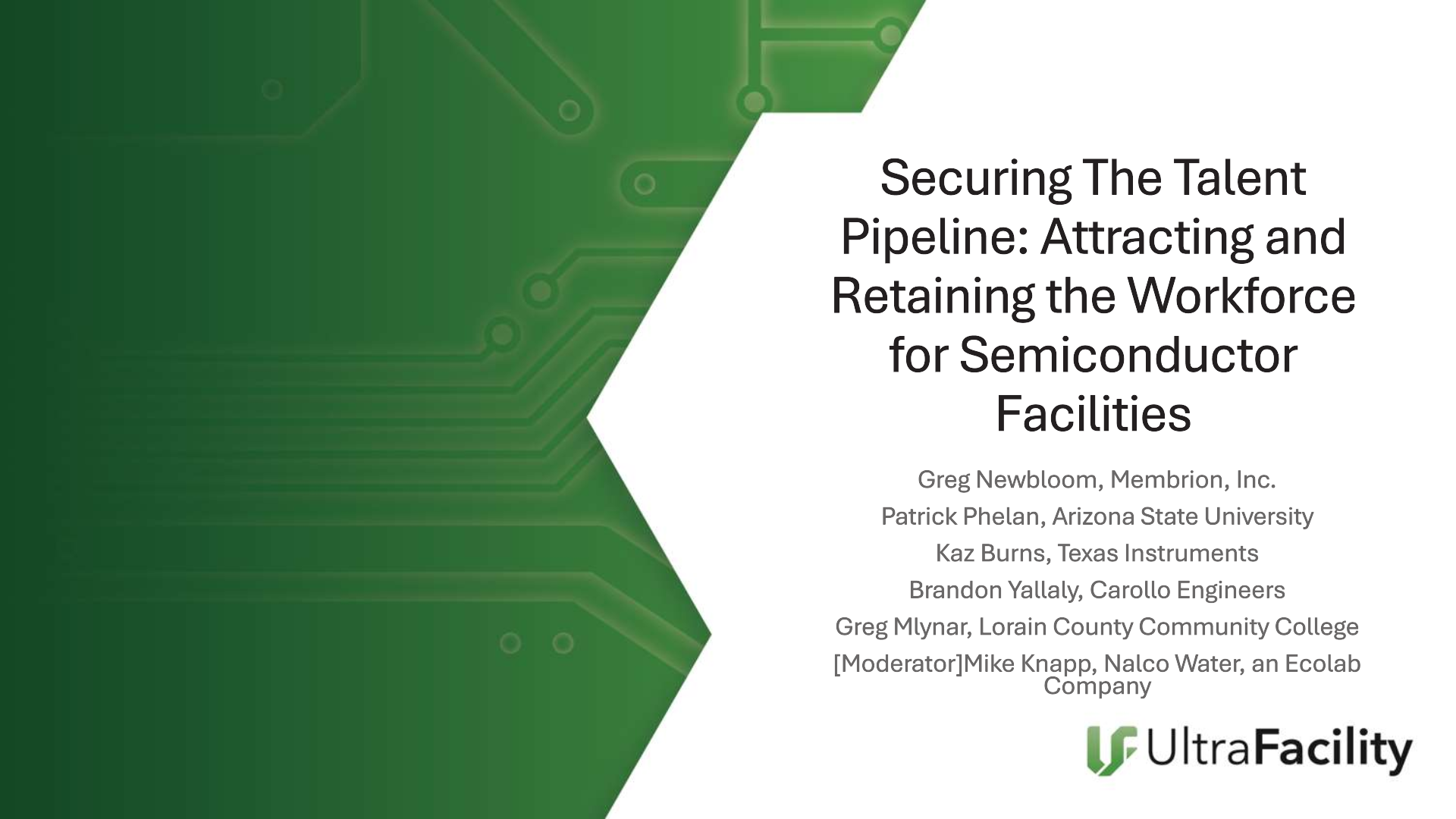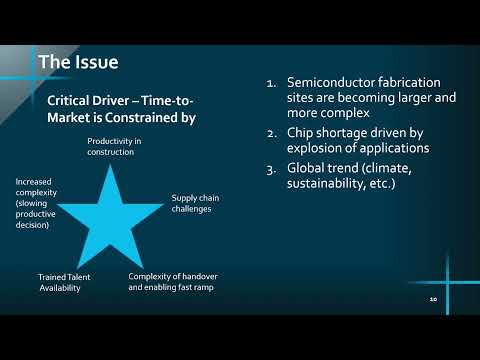Talent Development - Texas Instruments’ Approach
Share this insight
The semiconductor industry is facing a critical talent shortage, ranking among the top challenges for manufacturers today. Competing against other high-tech sectors for a limited pool of skilled professionals, the industry struggles with a perception problem; lacking the allure and perceived opportunities that attract top talent to fields like software and AI.
The rapid rise of generative AI will further transform this landscape, driving unprecedented demand for advanced chips and expanding the workforce. At the same time, it will reshape the skillsets required, requiring semiconductor companies to continuously adapt their talent development strategies to keep pace with evolving technology and market needs.
In a recent UltraFacility webinar on the topic of securing the talent pipeline, Kaz Burns from Texas Instruments explained the company's strategy for talent development.
She recalled the companies struggle to recruit sufficient local technician talent when expanding its Richardson, Texas factory in 2022, which resulted in the introduction of new workforce development efforts. In 2025, the company has announced a $60 billion investment in seven fabs across Texas and Utah, which will support more than 60,000 jobs, making the challenge increasingly critical to address.
Here is the focus of their strategy:
External pipeline
The semiconductor workforce is ageing, and the number of students enrolled in relevant programmes is declining. To address this, Texas Instruments’ outreach approach starts early, engaging with students, parents, and educators from middle school level upwards to create industry awareness long before college. Action includes serving on advisory boards, helping to shape curricula, and training instructors to introduce skills needed for roles in semiconductor manufacturing. Burns describes the value of their approach, “This outreach is twofold; it not only creates pathways for students to explore potential careers in the industry but also helps us attract skilled and industry-aware candidates.”
Burns described how by hosting site tours and academic outreach events, Texas Instruments reinforces the message: semiconductor careers offer not just relative security compared to industries like oil and gas but provide the opportunity to enter a sector experiencing huge economic growth, driven by initiatives like the CHIPS Act and global investment. This helps improve the obscure brand image faced by semiconductor companies amongst students.
Texas Instruments also engages with existing programmes that support trades like construction to incorporate a semiconductor focus. By supporting the integration of relevant skills such as fab cleanroom construction into existing technical college curriculums, the company helps bridge the skills gap.
New hire ramp and upskilling
Internally, Texas Instruments focuses on both the initial new hire ramp, and longer-term development and upskilling. Every new hire receives a transparent career roadmap, with milestones at one, three, and five years. This clarity addresses the concerns surrounding career advancement, which is a common pain point in semiconductor roles, and helps retain talent in a highly competitive market.
The online Learning Management System (LMS) serves as the central hub for ongoing education, delivering role and site-specific training content and providing access to higher education opportunities within the company. Burns states “Texas Instruments leverages external partnerships and a train-the-trainer model for maximum impact, focusing on developing expertise within small, well-defined groups who then build out inhouse capabilities further.”
Texas Instruments is also exploring ways to enhance data analytics capabilities across the workforce. This includes upskilling employees in areas such as artificial intelligence (AI), machine learning, and basic data analytics, which are increasingly becoming vital skills for modern semiconductor manufacturing.
Building a data-driven approach to workforce development
A data focused approach is used to shape all workforce development initiatives, from identifying skill gaps to prioritising training and development resources. Burns explains, “For every facilities team and role, we create a skills matrix aligned with our success profiles, by doing this we can identify single points of failures or areas where we lack competency. We use this data to make decisions about where we want to focus our training efforts.”.
A core focus of these efforts has been documentation and knowledge transfer, aiming to reduce reliance on legacy knowledge and informal shadowing to ensure operational continuity and guarantee that critical knowledge is captured, accessible, and up to date. Burns states; “To do this, it is a big effort, we are collaborating with every team to define role-specific, site-specific and system-specific requirements, for what a person must know when they join a team. ”Texas Instruments is also introducing AI to streamline the knowledge management process and documentation creation.
Looking forward
In a rapidly changing industry, Texas Instruments acknowledges the need to identify and develop the skills that will be needed five or ten years down the line. Current actions are guided by the goal of preparing the workforce for anticipated technological and industry changes. As the webinar concluded, Burns emphasized that addressing the talent shortage requires a collective effort: “read any report, look at any of the papers, this challenge is far too big for just one company to solve alone, it takes the effort of collaborating and commitment from other companies, educational institutions and communities to make sure that we are maintaining that robust talent pipeline for the future.”
Securing the Talent Pipeline: Attracting and Retaining the Workforce for Semiconductor FacilitiesShare this insight

Collaborators
Kaz Burns
Organizations




